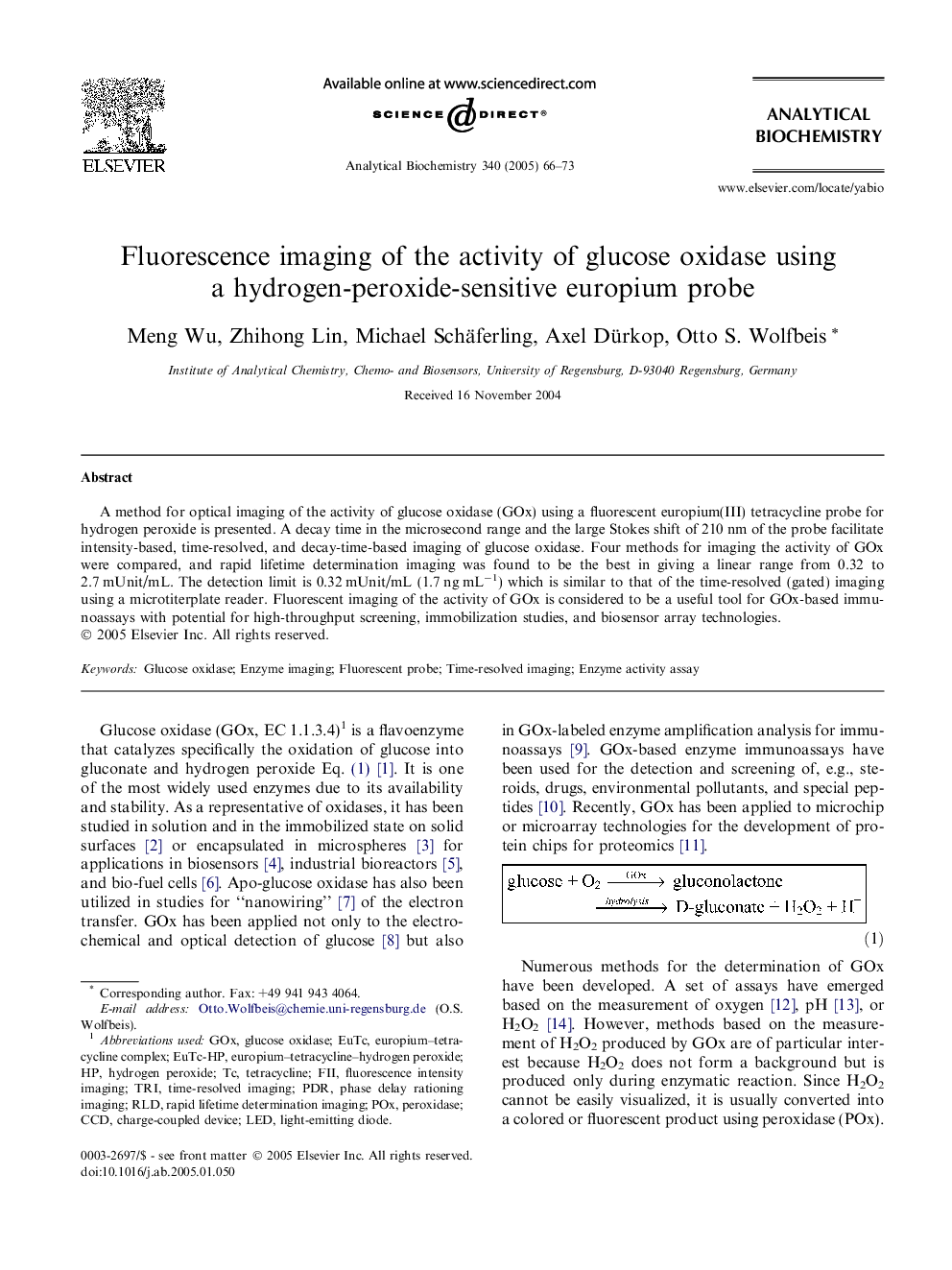| Article ID | Journal | Published Year | Pages | File Type |
|---|---|---|---|---|
| 10533812 | Analytical Biochemistry | 2005 | 8 Pages |
Abstract
A method for optical imaging of the activity of glucose oxidase (GOx) using a fluorescent europium(III) tetracycline probe for hydrogen peroxide is presented. A decay time in the microsecond range and the large Stokes shift of 210 nm of the probe facilitate intensity-based, time-resolved, and decay-time-based imaging of glucose oxidase. Four methods for imaging the activity of GOx were compared, and rapid lifetime determination imaging was found to be the best in giving a linear range from 0.32 to 2.7 mUnit/mL. The detection limit is 0.32 mUnit/mL (1.7 ng mLâ1) which is similar to that of the time-resolved (gated) imaging using a microtiterplate reader. Fluorescent imaging of the activity of GOx is considered to be a useful tool for GOx-based immunoassays with potential for high-throughput screening, immobilization studies, and biosensor array technologies.
Related Topics
Physical Sciences and Engineering
Chemistry
Analytical Chemistry
Authors
Meng Wu, Zhihong Lin, Michael Schäferling, Axel Dürkop, Otto S. Wolfbeis,
